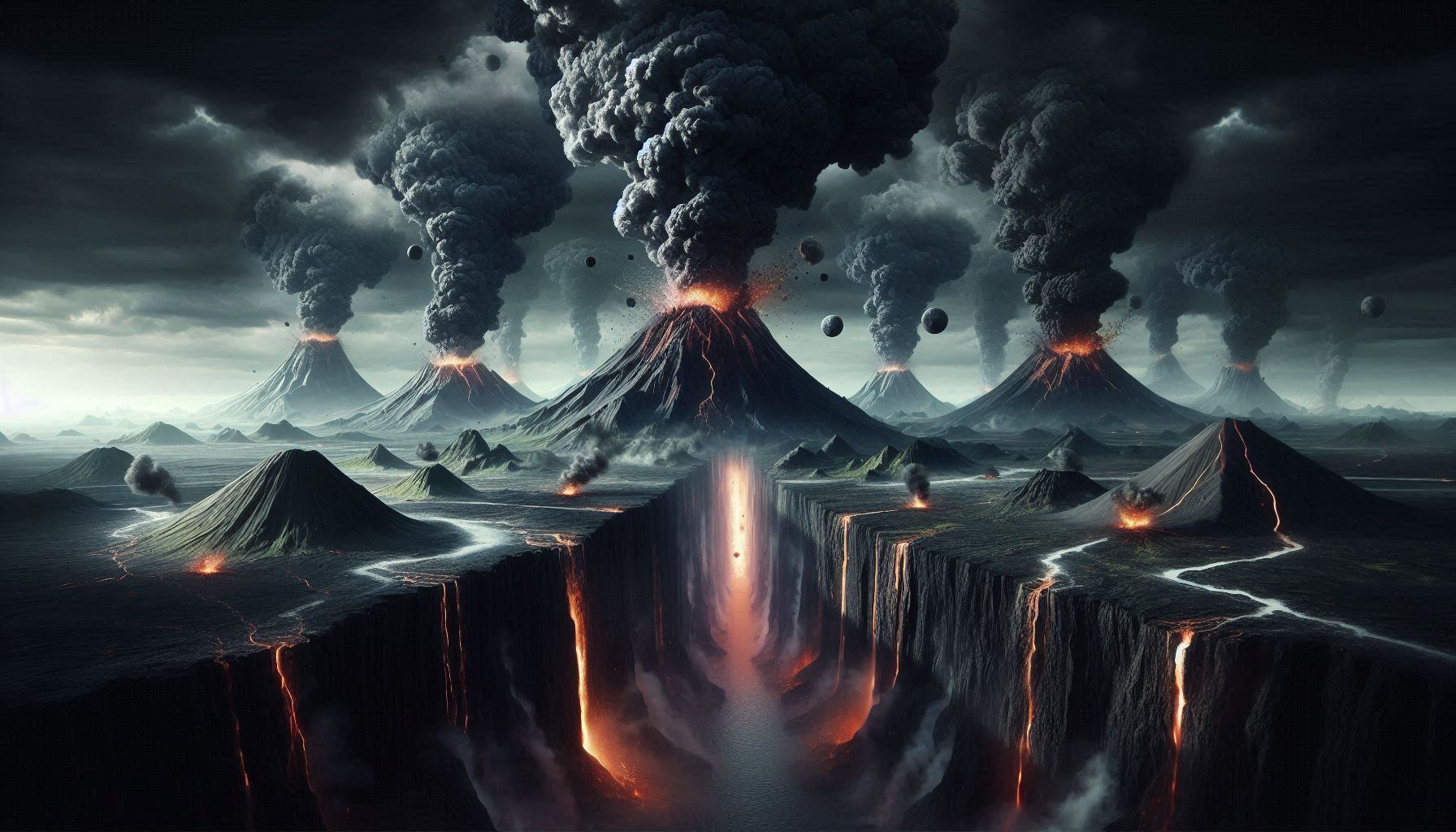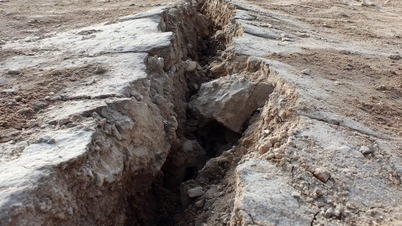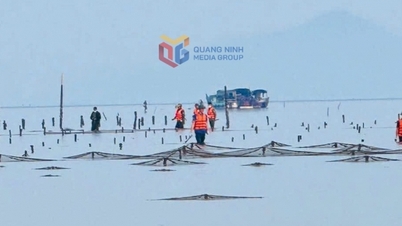(NLĐO) - A paper published in a scientific journal shows that the breakup of the supercontinent and the mass extinction were caused by the same "culprit".
According to Sci-News, a new study led by the U.S. National Academy of Sciences has unveiled the mystery of the mass extinction event at the end of the Triassic period, which occurred nearly 201.6 million years ago and caused the extinction of 76% of Earth's species.
It was a horrific massacre that occurred both underwater and on land. Notably, it coincided with the splitting of the supercontinent Panagea.

A series of catastrophic events occurred on Earth at the end of the Triassic period - AI illustration: ANH THU
A paper published in the scientific journal Proceedings of the National Academy of Sciences suggests that the breakup of the supercontinent and the mass extinction were caused by the same "culprit."
As previous studies have shown, this ancient supercontinent was split apart by millions of cubic kilometers of lava erupting massively over approximately 600,000 years, separating at the ancient boundaries of what are now the Americas, Europe, and North Africa.
New research suggests the event was even more catastrophic: The authors present evidence showing that instead of spanning hundreds of thousands of years, all of these eruptions were contained within a single century.
During this concentrated timeframe, sulfate particles reflecting sunlight are ejected into the atmosphere, cooling the Earth and freezing many of its inhabitants, a phenomenon known as a devastating "volcanic winter."
Previously, the Earth was very hot, with atmospheric carbon dioxide levels three times higher than they are today.
Then, the temperature rose rapidly again, returning to a state of extreme heat, completing the final stage of the chain of disasters.
Dr. Dennis Kent from the Lamont-Doherty Earth Observatory (USA), a co-author, said that geological evidence revealing this event has been found in various locations in Morocco and the United States.
In the sediments just beneath the layer preserving evidence from this catastrophe, scientists also found many strange fossils from the Triassic period.
These include large terrestrial and semi-aquatic relatives of crocodiles, exotic tree lizards, giant flat-headed amphibians, and many tropical plants.
They were the victims of the mass extinction at the end of the Triassic period.
These small, feathered dinosaurs, which existed tens of millions of years earlier, survived, thrived, and grew much larger in the subsequent Jurassic period, along with turtles, lizards, and mammals.
Perhaps their small size allowed them to hide in burrows and survive drastic temperature changes.
Source: https://nld.com.vn/su-that-dang-sau-cuoc-tham-sat-kinh-hoang-nhat-doi-voi-sinh-vat-trai-dat-196241101114413647.htm




![[Image] Close-up of the newly discovered "sacred road" at My Son Sanctuary](/_next/image?url=https%3A%2F%2Fvphoto.vietnam.vn%2Fthumb%2F1200x675%2Fvietnam%2Fresource%2FIMAGE%2F2025%2F12%2F13%2F1765587881240_ndo_br_ms5-jpg.webp&w=3840&q=75)














































































































Comment (0)